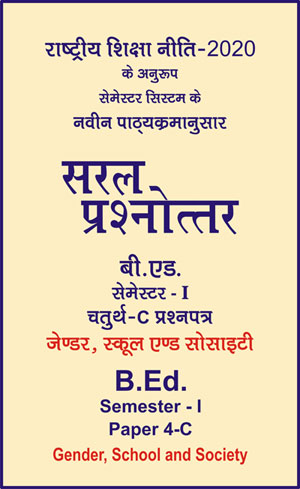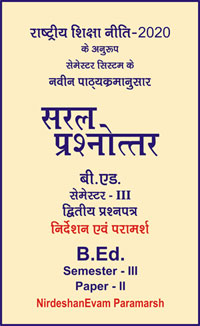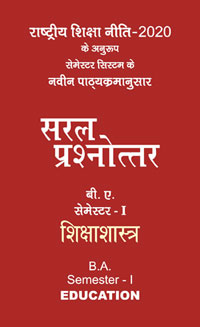|
बी एड - एम एड >> बी.एड. सेमेस्टर-1 प्रश्नपत्र-IV-C - जेण्डर, स्कूल एण्ड सोसाइटी बी.एड. सेमेस्टर-1 प्रश्नपत्र-IV-C - जेण्डर, स्कूल एण्ड सोसाइटीसरल प्रश्नोत्तर समूह
|
|
||||||
बी.एड. सेमेस्टर-1 प्रश्नपत्र-IV-C - जेण्डर, स्कूल एण्ड सोसाइटी (अंग्रेजी भाषाा में)
Question- When was the rape law made in India? Has the number of rapes come down since its formation? Explain.
Answer -
Under the verdict given by the court in 1983, in connection with rape, the woman who was raped was not required to give any evidence to present her side. The court said that as is the situation in our country, it is for a woman to give evidence that she has opposed rape, to state that it is like sprinkling salt on her wound. Now she doesn't need to tell. The Indian Evidence (Amendment) Bill 2002, which removed two sections from the original Act of 1872, makes it clear that the victim of rape is generally a person of immoral character.
According to the 1983 amendment to the judiciary, under the law of rape, even today women who have been raped do not come before the court and hence we do not get any report of it. The reason for not appearing before the court is because there is a social stigma attached to it and women try to avoid it. Here, there is also no awareness among the public to oppose in human incidents like rape.
Rape is a serious challenge to the empowerment of women. The fear of rape persists that women are unable to aspire to social mobility. Parents also do not motivate their girls to achieve higher values of life. Efforts for gender equality also do not progress due to the continuing unchecked sexual abuse of women.
|
|||||

 i
i 









